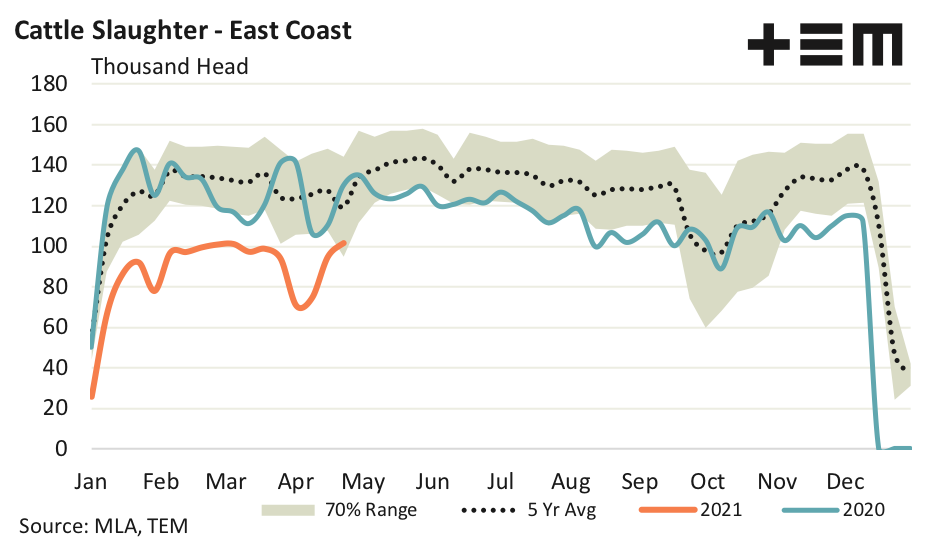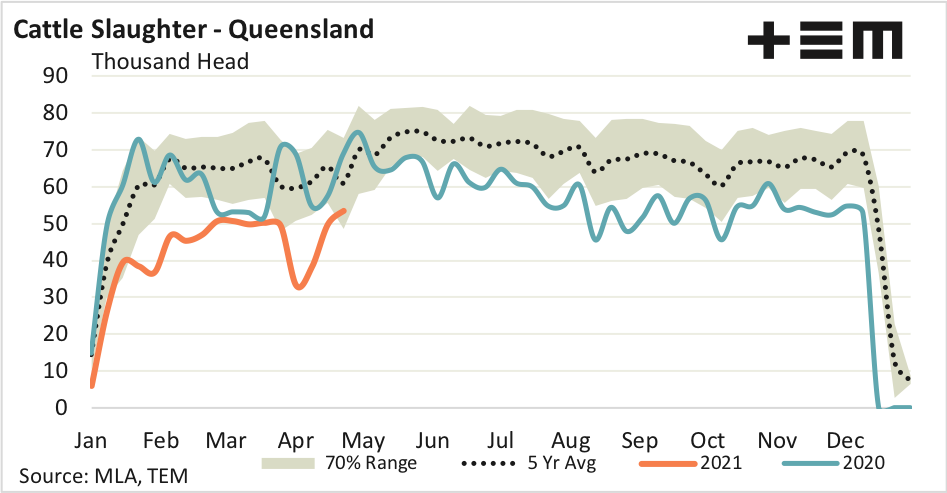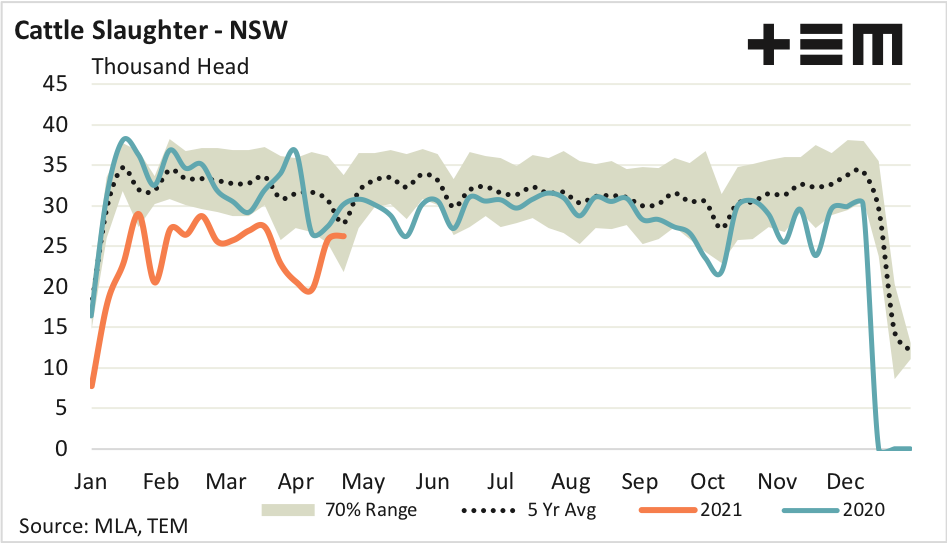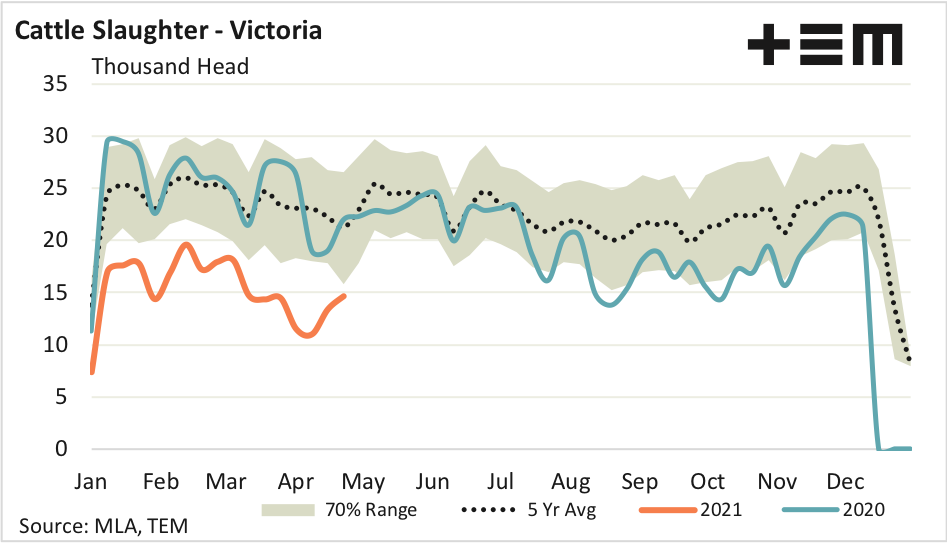The slaughterhouse rules
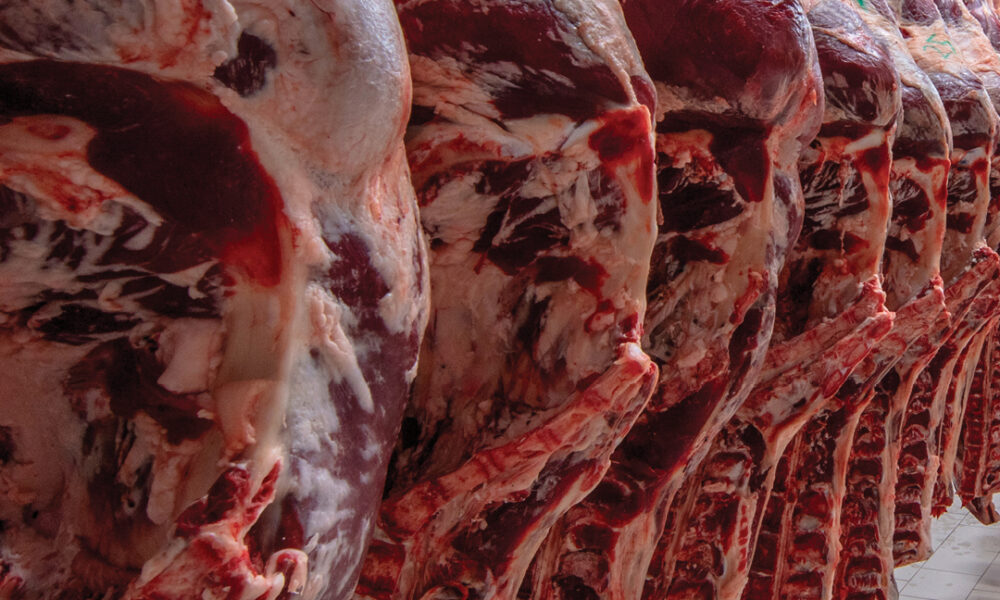
The Snapshot
- East coast cattle slaughter volumes have hit a new weekly peak this season, moving to just 15% below the five-year seasonal pattern and is 7% higher than the bottom end of the normal range.
- Weekly slaughter levels in Queensland lifted by 7% on the week prior to sit just 12% below the five-year average pattern.
- NSW cattle slaughter levels are only 6% under the seasonal average levels that could be expected for this time in the year, based on the five-year average pattern.
- Victoria remains the laggard state with cattle processing levels that are 31% under the five-year average trend for this time in the season.
- The MLA weekly slaughter report for the last four weeks highlights that the FSR has averaged 44%. This shows that we are currently in a technical herd rebuild.
The Detail
Meat and Livestock Australia (MLA) weekly slaughter figures for the week ending on the 23rd April show the highest east coast slaughter volumes recorded so far this year, with 101,573 head of cattle processed. This is a 7% gain on the levels recorded the week earlier.
However, despite the increase in cattle sent to meat works the trend has only just crept into the lower boundary of the normal seasonal range for the first time in this season. The grey shaded 70% one represents where weekly cattle slaughter has fluctuated 70% of the time over the last decade and could be used as a benchmark for levels that are considered normal across the season.
East coast cattle slaughter has been travelling well below the bottom of the 70% range for much of the year, reflective of the tight supply, low herd numbers and increased restocking intentions. Indeed, the average weekly slaughter volumes since the start of 2021 have been running 30% below the five-year seasonal pattern and 18% below the bottom of the 70% range boundary. For the week ending the 23rd April cattle slaughter volume has moved to just 15% below the five-year seasonal pattern and is 7% higher than the bottom end of the normal range.
Increased cattle slaughter volumes in Queensland are driving the east coast numbers higher. Weekly slaughter levels in Queensland lifted by 7% on the week prior to sit just 12% below the five-year average pattern for this week in the season. Weekly cattle slaughter in Queensland hit 53,472 head for the week ending on the 23rd of April and this is the highest weekly volumes recorded in Queensland this year.
NSW cattle slaughter gained just 2% on the previous week to reach 26,225 head processed. While this isn’t the highest weekly slaughter volumes seen this year in NSW it is only 6% under the seasonal average levels that could be expected for this time in the year, based on the five-year average pattern.
Victorian cattle slaughter continue to lag well behind the more northern east coast states. There were 14,633 head of cattle processed in Victoria for the week ending 23rd April and, while this was a 9% increase on the week prior, it represents processing levels that are 31% under the five-year average trend for this time in the season.
MLA have recently updated some of their online reporting functionality, including the weekly slaughter reporting. It is now possible to get an increased level of information on what types of cattle are being processed each week, including the male to female ratio.
The female slaughter ratio (FSR) for cattle is something we keep an eye on closely at EP3 to give us an indicator of the status of the herd rebuild or liquidation. Historically, we needed to wait until Australian Bureau of Statistics (ABS) quarterly data was released before we could see if the FSR was above or below the threshold of 47% that determines if the herd is in rebuild (FSR under 47%) or liquidation phase (FSR over 47%).
The new MLA weekly slaughter report shows that for the last four weeks the FSR has averaged 44%. This shows that we are currently in a technical herd rebuild, something we noted in the predictive modelling we published on the FSR back in February 2021.

